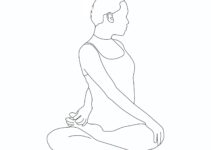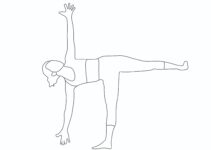What is Nadi Shodhana Pranayama?
Nadi Shodhana (nah-dee show-DAH-nah) consists of two words: Nadi means ‘subtle energy channel’, and Shodhan means cleaning, purification, and cleansing. Nadi Shodhana Pranayama is one of the essential pranayamas, which can prevent many diseases and disorders if practised with proper technique. This practice purifies the Naḍis by removing the blockages from the naḍis and facilitates the free flow of prana in naḍis. Nadi Shodhana Pranayama is also known as anulom vilom. Viloma means produced in reverse order. This variety gets its name because the nostrils are used reversibly during each inhalation and exhalation. This pranayama is also known as Alternate Nostril breathing. Here, we will discuss the procedures of perming Anulom Vilom, its benefits and precautions.

Why Nadi’s functioning are essential?
Nadis viz. Ida, Pingala and Sushumna are obstructed or blocked because of stress, anxiety, depression and faulty lifestyle. Due to the improper functioning of Ida, one can experience depression, cold, laziness, etc. However, if Pingala nadi is not working correctly, the person may experience heat, high temper, irritation, excessive appetite and excessive sexual urge.
Nadi Shodhana Pranayama references books
- In Gheraṇḍasaṁhita, Nadi Shodhana Pranayama has been considered a preparatory practice and has been described independently.
- In Haṭhapradipika, Nadi Shodhana Pranayama has not been placed under eight kumbhakas; it has been described separately as a fundamental practice.
- According to Haṭhayoga scriptures, the practitioner should breathe through the nostrils alternately repeatedly. When inhalation is completed, close both nostrils, the right nostril by the thumb and the left by the ring finger and little finger; never swing the index and middle fingers. The nostrils are to be closed, the kumbhaka is sustained for as long as comfortable, and then exhalation is done (Gheraṇḍasaṁhita, 5/53).
- According to Sivasaṁhita, let the wise practitioner close the Pingala (the right nostril) with the right thumb, inspire air through the Iḍa (the left nostril); and keep the air confined – suspending the breath – as long as possible; and afterwards breath out slowly, and not forcibly through the right nostril. Again, draw breath through the right nostril and hold the breath for as long as strength permits; then expel the air through the left nostril, not forcibly, but slowly and gently (Sivasamhita, 3/22-23).
- In has been mentioned in Chudmani Upanishad as cleaning of nerves.
How to do Nadi Shodhana Pranayama step by step
- Sit in any comfortable meditative posture. Those who cannot sit in a meditative posture may sit against a wall with their legs outstretched or in a chair which has a straight back.
- Keep the head and spine erect.
- Close your eyes.
- Be calm and focus on your breathing
- Now, look at the nose tip and place the right hand on the right knee and the left hand on the left knee.
- Close the right nostril with the thumb. Inhale through the left nostril, counting up to five.
- After five breath counts, release the thumb pressure from the right nostril and press the left nostril with the ring finger, blocking the airflow.
- Exhale through the right nostril, counting up to 5, keeping the respiration rate slow, deep and silent.
- Inhale through the right nostril, counting up to 5.
- Exhale through the left nostril, counting up to 5, keeping the respiration rate slow, deep and silent.
- Do it in five rounds.
Awareness and breathing
In the initial stage, one should practise it for 3 to 5 minutes. It can be repeated for several rounds according to the capacity. Ensure there is no sound when the air passes through the nostrils. The practitioner should practise it daily for a week with regular breathing patterns. During this period, the breathing rate and flow time should remain the same for inhalation and exhalation. Later on, the ratio between inhalation and exhalation should be modified to 1:2.
Top facts about Nadi Shodhana Pranayama
- Nadi Shodhana Pranayama means purification of nerves.
- It is an excellent breathing practice to keep the mind relaxed and calm.
- It is said that the practice of this praṇayama purifies all the impurities of Naḍi, viz. nerve impulses, saṁskara or impressions and helps to attain physical and mental well-being.
- Nadi Shodhana Pranayama is a practice before eight praṇayama explained in Haṭhayogic texts.
- This is the most common praṇayama prescribed for everybody without any problem.
- Those who have some health problems should perform it without kumbhaka.
9 wonder benefits of Nadi Shodhana Pranayama
- Nadi Shodhana Pranayama helps to calm and steadies the mind and improves focus and concentration—Stimulates calming centres of the brain.
- Opens the naḍis (energy channels), removes blockages from them, and facilitates the free flow of energy throughout the body.
- Improves blood supply to the brain.
- Balances left and right hemispheres and promotes clear thinking.
- Strengthens the immunity of the body. Therefore, it should be practised every day during covid 19 pandemic time.
- Reduces anxiety and stress and helps to manage hypertension.
- Provides sufficient oxygen for every cell in our body. With enough oxygen, food can be properly metabolised.
- Removes waste products such as carbon dioxide and other toxic gases from the body.
- Strengthens muscles and helps to gain control over the diaphragm movement; improves abdominal tone and singing capacity.
Precautions and contraindications
- Initially, retention of breath (kumbhaka) should be avoided.
- At the slightest sign of discomfort, reduce inhalation and exhalation duration.
- Make sure that you don’t force in any way and that there is no haste whatsoever.
- It should be done as though you have all the time in the world.
Difference between Nadi Shodhana Pranayama and Anulom Vilom
In both cases, breathing is done from the left nostril while exhaling through the right nostril. However, in the case of anulom vilom, there is no Kumbhak, whereas it is compulsory in the case of Nadi Shodhana Pranayama.






Loved the blog a lot and it write up is quite helpful for Beginners like me. Found this and also practicing this amidst this pandemic situation.
can nadishuddhi pranayama be done at any age , means over 75 also
yes